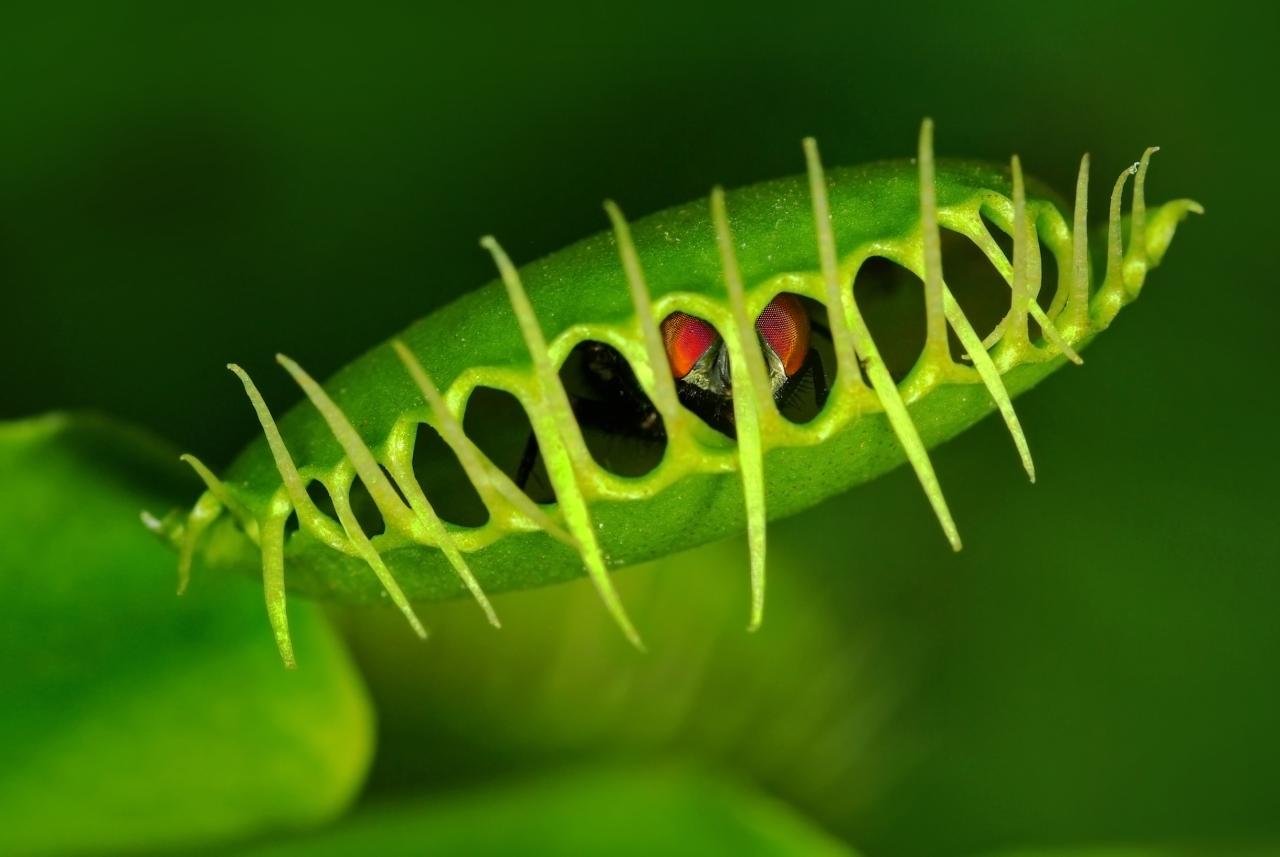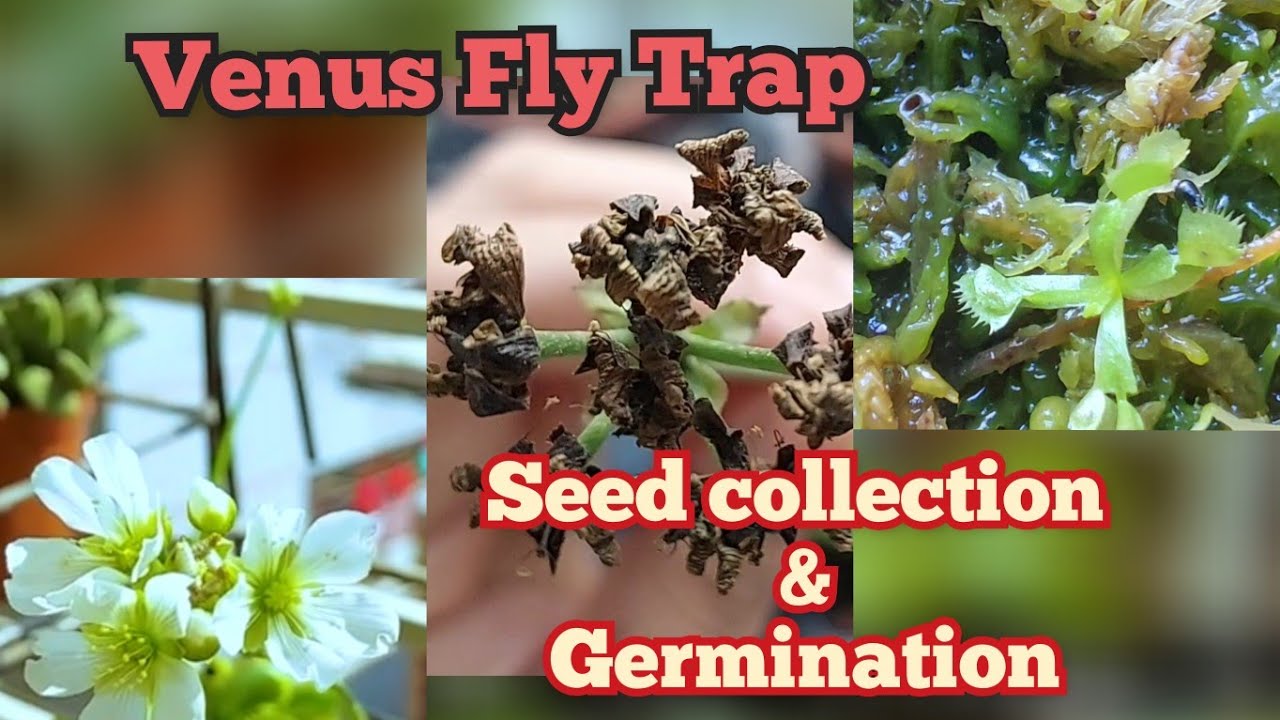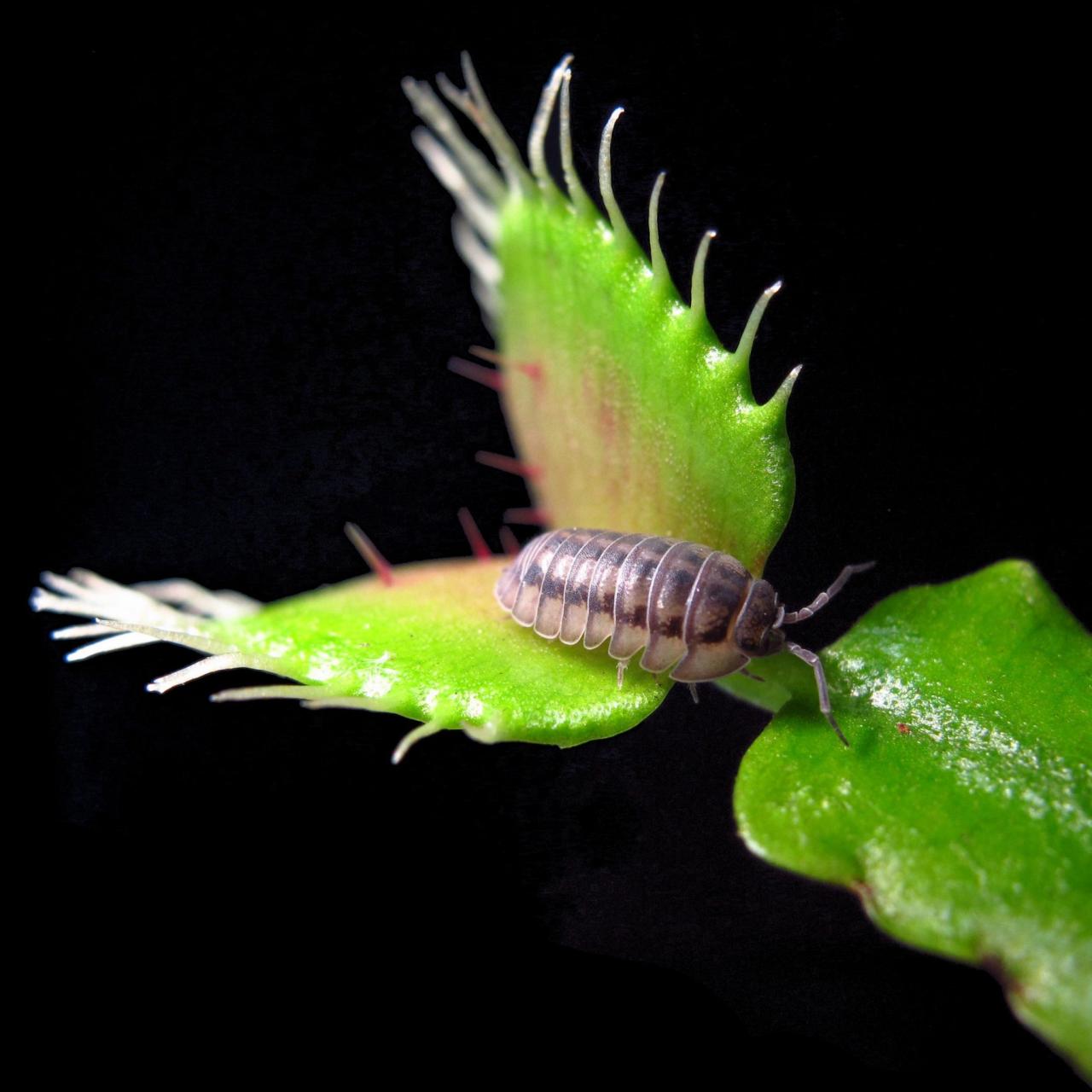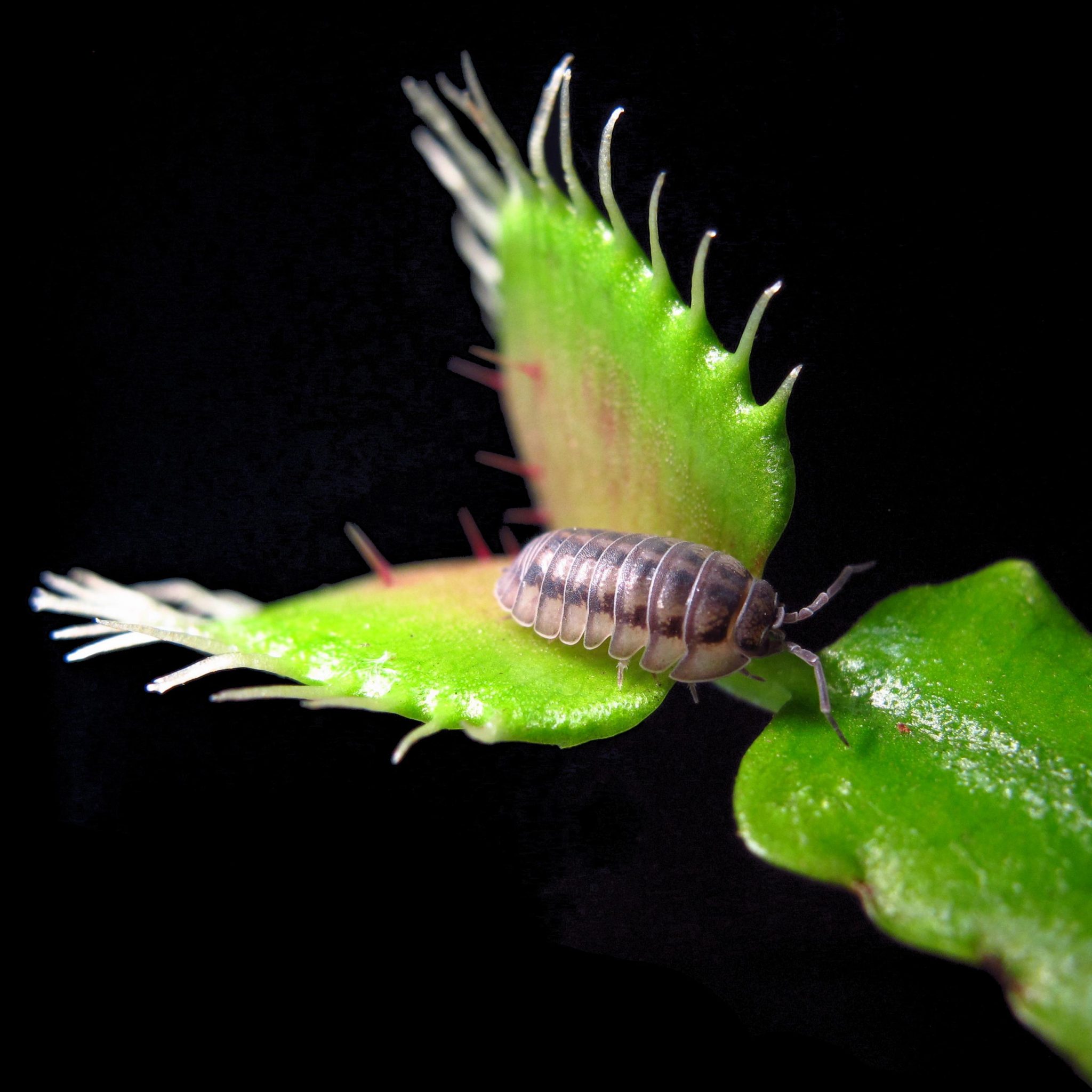The Hidden Secrets of Venus Fly Trap Propagation Revealed, delves into the captivating world of these carnivorous plants, uncovering the secrets to successfully cultivating them. These fascinating creatures, with their unique adaptations and ecological roles, have long captivated plant enthusiasts.
This guide offers a comprehensive exploration of Venus flytrap propagation, encompassing methods, techniques, and essential tips for nurturing these captivating plants from seed to maturity.
From understanding the intricacies of seed germination to mastering the art of leaf cuttings, this article provides a step-by-step guide for successful Venus flytrap propagation. It unravels the secrets behind creating the perfect growing environment, including optimal light, humidity, and temperature conditions.
Moreover, it addresses common challenges and offers practical solutions for ensuring healthy growth and minimizing potential setbacks.
The Fascinating World of Venus Flytraps
The Venus flytrap (Dionaea muscipula) is a carnivorous plant that has captivated scientists and nature enthusiasts alike for centuries. Its unique ability to capture and digest insects has made it a symbol of both beauty and brutality in the plant kingdom.
This article delves into the captivating world of Venus flytraps, exploring their fascinating characteristics, ecological significance, and remarkable survival strategies.
The Unique Characteristics of Venus Flytraps
Venus flytraps are distinguished by their distinctive trapping mechanism, a pair of hinged lobes that form a snap-trap. The lobes are lined with sensitive trigger hairs, which, when stimulated by prey, initiate the rapid closure of the trap. The edges of the lobes interlock, forming a cage that prevents the escape of the captured insect.
The Ecological Role of Venus Flytraps
Venus flytraps play a vital role in their native habitats, primarily in the nutrient-poor wetlands of the southeastern United States. By capturing insects, they supplement their nutrient intake, particularly nitrogen, which is often scarce in these environments. Their carnivorous nature allows them to thrive in habitats where other plants struggle to survive.
Fascinating Facts about Venus Flytraps
- Origins:Venus flytraps are native to a small region in North and South Carolina, USA. They are found primarily in nutrient-poor, sandy soils along the Atlantic coast.
- Adaptations:Venus flytraps have evolved a number of adaptations to thrive in their harsh environment. Their trapping mechanism is incredibly efficient, capable of closing in less than a tenth of a second. They also produce digestive enzymes that break down their prey, providing them with essential nutrients.
- Survival Strategies:Venus flytraps have evolved a variety of survival strategies to ensure their continued existence. Their traps are highly selective, only closing when stimulated by appropriate prey, such as insects. They also have a limited number of traps, which are typically replaced over time.
Unveiling the secrets of Venus flytrap propagation is a rewarding journey, much like the meticulous art of cultivating a Bonsai. Both require patience, precision, and a deep understanding of the nuances of growth and development. By mastering the techniques of propagation, you can create a miniature ecosystem teeming with life, just as a Bonsai master crafts a miniature world within a pot.
Unveiling the Secrets of Propagation: The Hidden Secrets Of Venus Fly Trap Propagation Revealed

The Venus flytrap, a captivating carnivorous plant, is a popular choice for home gardeners. Its ability to capture and digest insects adds a unique touch to any collection. But for those wanting to expand their flytrap family, understanding propagation methods is essential.
Methods of Venus Flytrap Propagation
Propagating Venus flytraps is a rewarding experience, allowing you to create new plants and share them with others. There are three primary methods: seed germination, division, and leaf cuttings. Each method has its advantages and disadvantages, influencing the choice of method for different situations.
While Venus flytraps are fascinating carnivores, they also offer a unique visual appeal. Their striking, intricate traps, often likened to tiny jaws, can add a touch of the exotic to any indoor space. For a more traditional approach, consider incorporating hanging plants, as showcased in The Most Beautiful Hanging Plants for Every Season.
These graceful plants, cascading from their pots, can complement the bold geometry of the Venus flytrap, creating a captivating contrast. Whether you prefer the dramatic allure of the flytrap or the delicate beauty of hanging plants, both offer distinct ways to bring the outdoors in.
Essential Propagation Techniques
Successful Venus flytrap propagation relies heavily on providing the ideal environment for the seedlings. This involves creating a suitable growing medium, ensuring adequate light, humidity, and temperature conditions, and using appropriate fertilizers.
Preparing the Ideal Growing Medium
The growing medium plays a crucial role in providing the necessary nutrients and drainage for Venus flytrap seedlings. Here’s a step-by-step guide to preparing the ideal growing medium:
- Choose a suitable base:Begin with a base of sphagnum peat moss, known for its excellent water retention and low pH, which Venus flytraps prefer.
- Add perlite for drainage:Incorporate perlite, a lightweight and porous material, into the peat moss. This improves drainage, preventing waterlogging and root rot. A good ratio is 1:1 peat moss to perlite.
- Optional additions:You can optionally add a small amount of horticultural sand for additional drainage and aeration. Some growers also add a small amount of long-fiber sphagnum moss to the mix for improved moisture retention.
- Sterilize the medium:Before using the medium, sterilize it to eliminate harmful bacteria and fungi. This can be done by microwaving the medium for a few minutes or by baking it in the oven at a low temperature.
- Fill the container:Fill the propagation container with the sterilized medium, leaving about an inch of space at the top. Lightly press the medium down to create a firm base.
Providing Optimal Light, Humidity, and Temperature Conditions
Light, humidity, and temperature are critical factors influencing the growth and survival of Venus flytrap seedlings.
- Light:Venus flytraps thrive in bright, indirect sunlight. Place the propagation container in a location that receives at least 4-6 hours of sunlight daily, but avoid direct sunlight, which can scorch the seedlings. Artificial grow lights can also be used to provide the necessary light.
- Humidity:Maintaining high humidity is crucial for Venus flytrap seedlings. You can achieve this by placing the propagation container in a humid environment, such as a terrarium or by covering the container with a clear plastic dome or bag. Regularly misting the seedlings can also help maintain humidity.
- Temperature:Venus flytraps prefer warm temperatures, ideally between 70-85°F (21-29°C). During the winter, they require a period of dormancy at cooler temperatures (around 40-50°F (4-10°C)).
Recommended Fertilizers for Venus Flytrap Seedlings
Venus flytraps are carnivorous plants and obtain most of their nutrients from insects. However, they can benefit from occasional fertilization.
Fertilizer |
Application Method |
Frequency |
|---|---|---|
Liquid Carnivorous Plant Fertilizer |
Diluted in water and applied to the soil |
Once a month during the growing season |
Fish Emulsion |
Diluted in water and applied to the soil |
Once a month during the growing season |
Worm Castings |
Mixed into the growing medium |
Once every few months |
Common Challenges and Solutions
Propagating Venus flytraps can be a rewarding experience, but it’s not without its challenges. Understanding common issues and implementing effective solutions is crucial for successful propagation and the long-term health of your flytraps. This section explores some common challenges encountered during Venus flytrap propagation, along with practical solutions and preventive measures.
Fungal Diseases
Fungal diseases are a significant threat to Venus flytrap seedlings, especially in humid environments. Damp conditions and poor ventilation can create an ideal breeding ground for fungal pathogens.
- Damping-off: This fungal disease affects young seedlings, causing them to rot and collapse at the soil line.
- Powdery mildew: This fungal disease appears as a white powdery coating on leaves, hindering photosynthesis and potentially leading to leaf drop.
To prevent fungal diseases, ensure proper ventilation and avoid overwatering. Use a sterile growing medium and avoid overcrowding.
Understanding the intricate process of Venus flytrap propagation is crucial for successful cultivation. Just like selecting the perfect pot for a bonsai tree, choosing the right container for your Venus flytrap can significantly impact its growth and health. Consider factors like drainage, size, and material when selecting a pot, as outlined in this informative guide on Choosing the Right Bonsai Pot for Every Tree Stage.
By applying these principles to your Venus flytrap propagation, you can create a thriving environment that supports the plant’s unique needs.
- Sterilize the growing medium: Heat the growing medium in the oven at 180°C (355°F) for 30 minutes to kill any fungal spores.
- Avoid overwatering: Allow the growing medium to dry slightly between waterings.
- Use a fungicide: Apply a fungicide specifically designed for plants if fungal diseases are detected.
Pests
Various pests can attack Venus flytraps, damaging their leaves and hindering growth.
- Aphids: These tiny insects suck sap from leaves, causing yellowing and distortion.
- Mealybugs: These insects leave a white, cottony residue on leaves and stems, sucking sap and weakening the plant.
- Spider mites: These tiny arachnids spin webs on leaves, causing yellowing and stippling.
To control pests, regularly inspect plants for signs of infestation.
- Isolate infested plants: Separate infected plants from healthy ones to prevent the spread of pests.
- Use insecticidal soap: Apply insecticidal soap to affected plants, targeting the pests directly.
- Introduce beneficial insects: Consider introducing beneficial insects, such as ladybugs, to naturally control pest populations.
Nutrient Deficiencies
Venus flytraps require specific nutrients for healthy growth. Nutrient deficiencies can manifest as stunted growth, discolored leaves, or other abnormalities.
- Nitrogen deficiency: Leads to pale green or yellowish leaves and stunted growth.
- Phosphorus deficiency: Causes dark green leaves with reddish-purple veins and slow growth.
- Potassium deficiency: Results in yellowing of leaf margins and browning of leaf tips.
To address nutrient deficiencies, use a fertilizer specifically designed for carnivorous plants.
- Use a specialized fertilizer: Apply a diluted fertilizer solution to the growing medium every few weeks during the growing season.
- Avoid overfertilizing: Too much fertilizer can harm Venus flytraps, so follow the manufacturer’s instructions carefully.
- Provide a diverse diet: Feed your Venus flytraps with a variety of insects to ensure they receive a balanced diet.
Nurturing Young Venus Flytraps

Once your Venus flytrap seedlings have sprouted and developed a few true leaves, it’s time to transition them from their initial propagation environment to individual pots. This crucial step provides them with the space and resources they need to thrive and develop into healthy, mature plants.
Transplanting Young Venus Flytraps, The Hidden Secrets of Venus Fly Trap Propagation Revealed
Transplanting young Venus flytraps into their permanent pots is a delicate process that requires careful attention. The goal is to minimize stress on the seedlings while providing them with the ideal growing conditions.
- Choose the Right Pot:Select small pots, typically 2-3 inches in diameter, with drainage holes to prevent waterlogging.
- Use a Suitable Growing Medium:A well-draining mix of peat moss and perlite is ideal for Venus flytraps. Avoid using garden soil, as it often contains nutrients that can harm these carnivorous plants.
- Handle with Care:When transplanting, gently remove the seedling from its propagation tray, taking care not to damage the delicate roots. Place the seedling in the center of the new pot and fill the surrounding space with the growing medium.
- Water Thoroughly:After transplanting, water the young Venus flytrap thoroughly, ensuring the entire growing medium is moist but not waterlogged. Allow the excess water to drain through the drainage holes.
- Provide Bright, Indirect Light:Young Venus flytraps require bright, indirect light. Avoid placing them in direct sunlight, which can scorch their leaves.
Providing Adequate Water and Feeding
Water and feeding are essential for the healthy growth of young Venus flytraps.
- Watering:Venus flytraps prefer a consistently moist growing medium. Water them regularly, ensuring the soil remains moist but not soggy. During the summer months, you may need to water them more frequently. Use distilled or rainwater, as tap water often contains minerals that can harm these sensitive plants.
- Feeding:While young Venus flytraps can obtain some nutrients from their growing medium, they benefit from occasional feeding with live insects. Offer them small insects, such as fruit flies or gnats, no larger than the size of the trap. Avoid feeding them dead insects, as they can attract harmful bacteria.
Growth Stages and Care
Venus flytraps go through distinct growth stages, each requiring specific care.
- Seedling Stage (First Year):During this stage, Venus flytraps focus on developing their roots and leaves. They require consistent moisture and bright, indirect light. Avoid feeding them during this stage, as their digestive system is not fully developed.
- Juvenile Stage (Second to Third Year):In this stage, Venus flytraps begin to develop traps and become more active. They can be fed small insects, but only a few times per week. They continue to require consistent moisture and bright, indirect light.
- Mature Stage (Third Year Onward):Once Venus flytraps reach maturity, they can catch and digest larger insects. They still require consistent moisture and bright, indirect light. They may also require repotting into larger pots as they continue to grow.
Closure

Unlocking the hidden secrets of Venus flytrap propagation empowers plant enthusiasts to cultivate these fascinating carnivores with confidence. By following the techniques Artikeld in this guide, you can embark on a rewarding journey of nurturing these unique plants and witnessing their captivating growth from seedlings to mature, trap-laden specimens.
The journey of Venus flytrap propagation is a testament to the intricate beauty and resilience of nature, and with the right knowledge and dedication, you can cultivate these fascinating plants and contribute to their conservation.
Clarifying Questions
What are the best times of year to propagate Venus flytraps?
The best time to propagate Venus flytraps is during the spring and summer when they are actively growing.
How long does it take for Venus flytrap seeds to germinate?
Venus flytrap seeds can take anywhere from a few weeks to several months to germinate.
What are the signs of a healthy Venus flytrap seedling?
Healthy Venus flytrap seedlings will have vibrant green leaves, strong roots, and a healthy growth rate.
